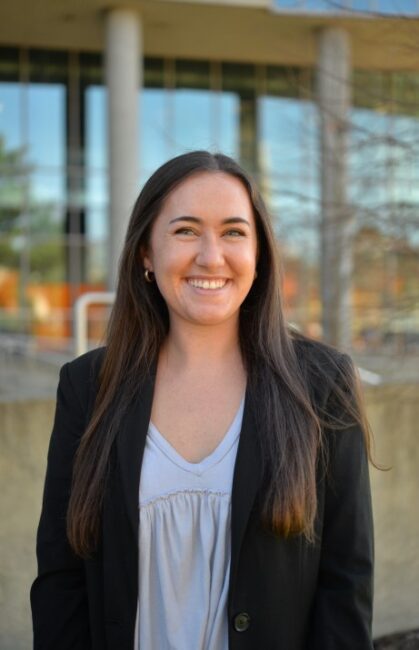Olivia Wright, Biomedical Engineering
*under the direction of Dr. Michael King
“Superhydrophobic array devices for the production of a tunable in vitro CTC cluster model”
02.15.23 | 3:30pm | 5326 Stevenson Center
Cancer metastasis, the spread cancer to a secondary organ, mainly occurs by tumor cells detaching from the primary site and traveling in the bloodstream. High levels of circulating tumor cells (CTCs) are associated with poor patient overall and progression-free survival. However, only 0.1% of CTCs survive the high levels of fluid shear stress and interactions with immune cells that occur in circulation. Clustering with other CTCs, immune cells, or stromal cells, has been shown to confer metastatic advantage to CTCs. Current methods of in vitro CTC cluster formation produce loose and non-uniform aggregates, making experimentation unreliable. The aim of this thesis project was to develop a device to reproducibly grow size-controlled CTC clusters in vitro. The superhydrophobic array device (SHArD) produced consists of an array of 100×100μm2 microwells on a square chip which fits in a 24-well plate, allowing for the culture of hundreds of uniform CTC clusters per well. The bottom of the microwells is superhydrophobic, preventing cell adhesion to the device and promoting cell-to-cell interactions. The prostate cancer cell line LNCaP and colorectal cancer cell line HCT116 were used to confirm cluster formation within the microwells. The current CTC cluster formation method was used for comparison. We confirmed the cell clusters grown in the SHArD can be size controlled and withstand physiologically relevant shear stress unlike the cell aggregates from the control method. This is a tool that will allow researchers to better study the advantages that cancer cell clustering in the circulation confers to the metastatic cascade.
